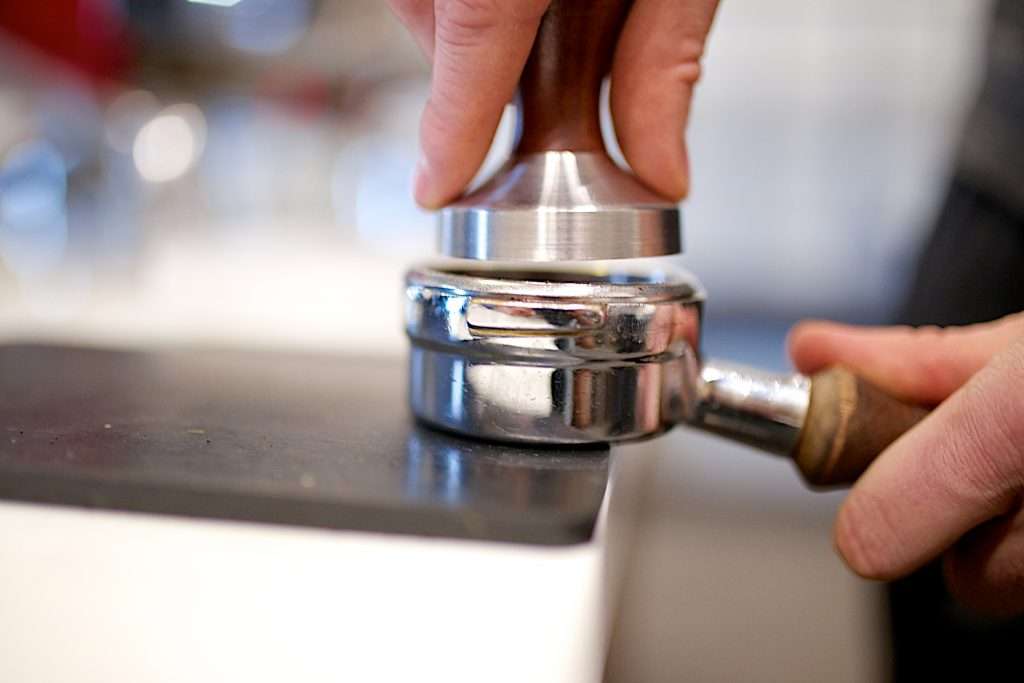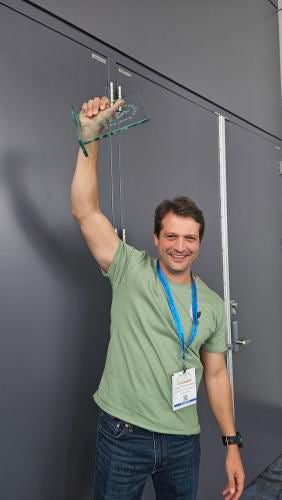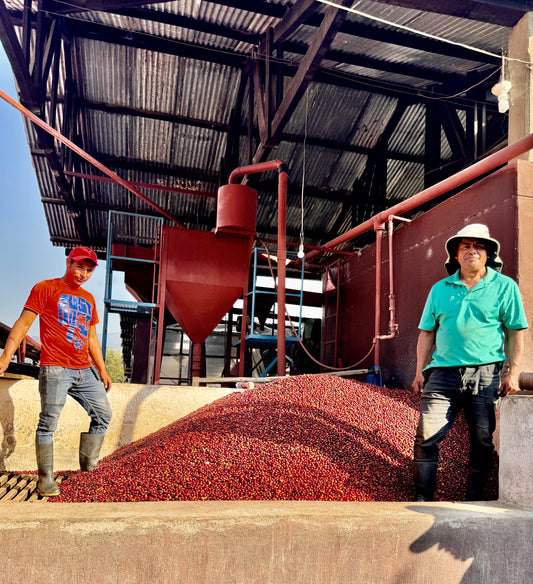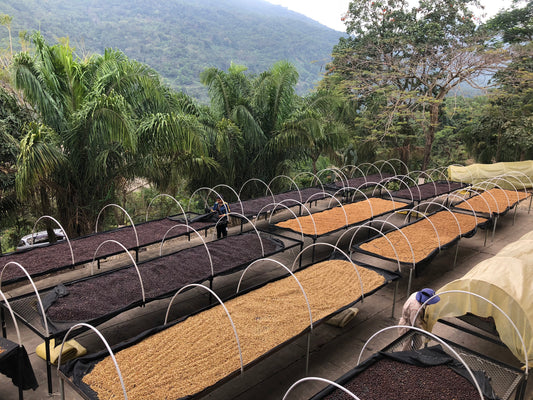Want Great Espresso? Start with Tamping your Espresso Correctly

How you tamp your espresso can have a huge impact on the flavour of the coffee. If you did everything else right but your espresso is tasting sour or running poorly, your tamp could be the culprit. Read more to learn tips on tamping espresso correctly and consistently.

When you’re leading a team of baristas, it can be common for everyone to have different ways of tamping. There are lots of wrong ways to tamp espresso, and baristas can carry these bad habits for years.
Poor tamping is not just an issue of flavour–it’s also a health and safety issue. Tamping can cause repetitive strain injuries over time, a condition more commonly known as “barista wrist” in the industry.
Luckily, it’s easy to learn how to tamp espresso properly and fix any mistakes. We’ll walk you through all the dos and don’ts of tamping espresso. But first, we’ll take a look at why we tamp coffee in the first place.

What happens if you don’t tamp coffee?
Tamping coffee is when you apply downward pressure on coffee using a tamper.
If you try to brew a portafilter with loose grounds, the water will move through the coffee instead of brewing it. As a result, you’ll get a watery, under extracted, sour espresso. Coffee that hasn’t been tamped has a lot of pockets of air, and the water finds an easy way to exit.
Tamping removes these air pockets from the coffee. This helps the water move more evenly throughout the whole puck. All it takes is one loose spot on the puck for the water to find this weak spot and rush through it. This is known as “channeling.”
What are some examples of poor tamping?
Here are some common ways that tamping goes wrong.
- Tamping at an angle
If you tamp at an angle and the puck isn’t parallel to the portfiler, the water will go to the lowest point. Water is always looking for the path of least resistance. Instead of brewing the whole puck, it will only brew the low part. To make sure your tamper is parallel to the portafilter, use the ring inside the portafilter basket as a guide.
- Holding the tamper incorrectly
Holding the tamper incorrectly can have an impact on the flavour. Avoid holding the tamper like an ink stamp with your hand gripping the handle only. This can cause coffee grounds to jump out of the basket and cause an uneven tamp. Instead, wrap your fingers around the base of the tamp while applying downward pressure.
- Not levelling out the coffee grounds before tamping
Tamping a mountain of coffee grounds won’t result in a level coffee bed. You’ll get a flat surface with bevelled edges–a perfect weak spot for the hot water. After grinding your beans into the portafilter, give the portafilter a good tap on the side. This helps the process along by settling the bed of coffee.
- Knocking the side of the portafilter with the tamp
After tamping your espresso, there will usually be some loose grounds floating on the sides of the puck. The barista’s common instinct is to knock the portafilter to get the loose grounds in the middle so they can tamp again. But knocking the side of the portafilter can crack the puck, causing channeling, and it also damages your equipment.
Instead of knocking, place your tamper on top of the puck again, and spin the tamp with no pressure. This will make those loose grounds on the side co-operate.

How to tamp espresso the right way: Here’s a simple step-by-step guide on how to tamp espresso properly.
- Grind your coffee into your portafilter. Once ground, tap it against the side of your hand (or on the tamping mat) to help level out the coffee bed.
- Place your portafilter on the tamp mat. Turn your body so that your dominant hand side is parallel with the bar counter. Place the tamper evenly on the bed of coffee so it’s parallel to the ring in the portafilter basket. Push straight down firmly until you meet resistance. (If your portafilter has a splitter, make sure the splitter is off the tamp mat. This prevents the splitter from breaking off.)
- If there are any loose coffee grounds, place the tamper back on. Without applying any pressure, spin the tamper to settle the loose grounds.
- Brew your espresso. Easy!
How hard should I tamp?
In the coffee industry, it’s agreed upon that 20-30 lbs of pressure goes into a proper tamp. You don’t need to tamp incredibly hard to achieve this. Tamp until you feel the coffee stop.
It can be easy to get tired at the end of the day and tamp lighter as the day goes on. Be aware of this, and try to keep a consistent tamping strength throughout the whole day.
Tamping safety
The trick to avoiding strain on your wrist is keeping it straight while you tamp and engaging your shoulder and your arm. Lifting your elbow at a 90 degree angle makes it easy to keep your wrist straight, and makes the power come from your arm.
Which is the best espresso tamper?
The most important thing when looking for a tamper is finding one that fits your portafilters. The tamp should spread to the very edges of the basket, ensuring a smooth, uniform tamp. If the tamper is too big, it simply won’t fit; if the tamper is too small, you’ll create air pockets around the edges and cause channeling.
For newbie baristas who don’t know how hard to press, click tampers are a great option. They make an audible clicking noise once 30 lbs of pressure have been pushed into the coffee puck.
How do I know if I’m tamping correctly?
You can tell a lot about how well (or poorly) your coffee is running just by looking at your spent coffee pucks. If you see any air pockets or obvious signs of the coffee spilling over the edge of the basket, your tamp could be the issue.
If you’re still not sure, try to look at the bigger picture. Brew a shot of espresso, dilute it with some water, and taste it. If the coffee tastes unpleasant and has an edge, try again. If it tastes acceptable, or even good, you’re on the right track!
Tamp champ
Tamping isn’t complicated; it’s actually remarkably easy. But unfortunately, there are a lot of bad habits out there that seem to be contagious. Baristas learn by watching other baristas, picking up on their habits without knowing whether they’re right or wrong. But it’s not their fault–if they don’t receive the proper training, how can they be expected to do a good job?
As a cafe manager or owner, it’s up to you to set standards and catch any bad habits before they get out of hand. By teaching correct tamping, you improve your coffee, retain your customer base, and keep your team safe.
Looking for more tips to improve your espresso game? Check out our previous blog post about degassing coffee for better tasting espresso. And, if you need more support, book a consultation with us, and drop us a line at info@fratellocoffee.com.





